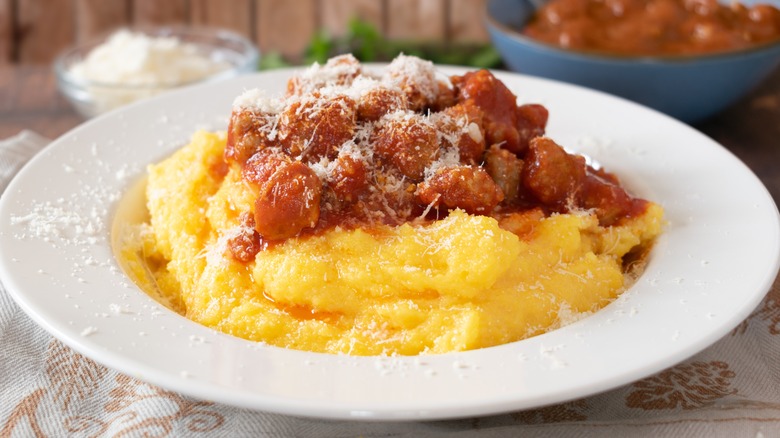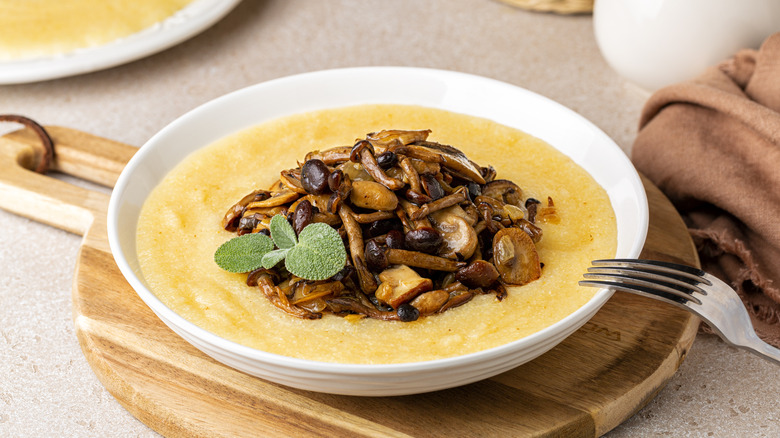Why You Should Consider Swapping Your Classic Pasta For Polenta
If your only experience with polenta is when your mother forced you to eat it as a child, it's time to revisit it. It's often misunderstood, largely because it often takes a backseat to its more popular cousin in the U.S., grits. But polenta, a type of cornmeal that's made by grinding up flint corn, is an Italian staple that can be used to make appetizers or entrees. And while pasta may be one of our favorite Italian dishes here in the U.S., there are plenty of good reasons to swap it out with this corn-based product instead.
For one, since polenta is made from corn, it's naturally gluten-free. There are, of course, gluten-free pasta alternatives on the market now (and we've ranked some of our favorites here), but using cornmeal means you can sidestep the process of searching for a tasty one entirely. Plus, polenta contains plenty of fiber and protein while still being low in fat and calories. But even with these benefits, you won't be sacrificing taste. Think of this ingredient as a rich, creamy bed for your favorite pasta sauce, as it easily soaks up other flavors. Its mild taste also means it's endlessly versatile, so you're free to experiment just like you are with noodles.
How to cook and top your polenta
Making polenta is a process similar to cooking rice. You'll start by boiling with water and salt, whisking it into your pot, then letting everything simmer for half an hour to 45 minutes. When it's done, stir in ingredients to make it nice and creamy, like butter, cream (a few tablespoons of each for every cup of cornmeal), and up to one cup of parmesan cheese.
If you're just starting out swapping your pasta for polenta, go with tomato-based sauce first. Since this cornmeal is mild and creamy, it beautifully soaks up the thin, acidic liquid in a tomato sauce. Once you've cooked your polenta, spoon servings into individual bowls and top them off with a big scoop of sauce. A Bolognese sauce, or any type of Ragu, would also work well here. However, you can also try vodka or pink sauces, mushroom-based options, or pesto. Or, instead of ladling straight sauce on your polenta, top your bowls with a protein cooked in a sauce — such as shrimp scampi or chicken Alfredo. No matter what you go with, feel free to sprinkle some more parmesan and chopped herbs on top of your final product.

